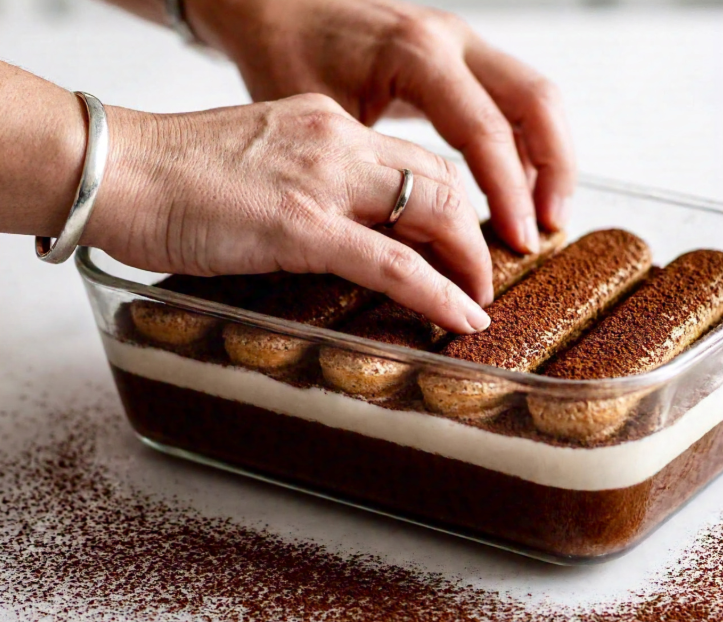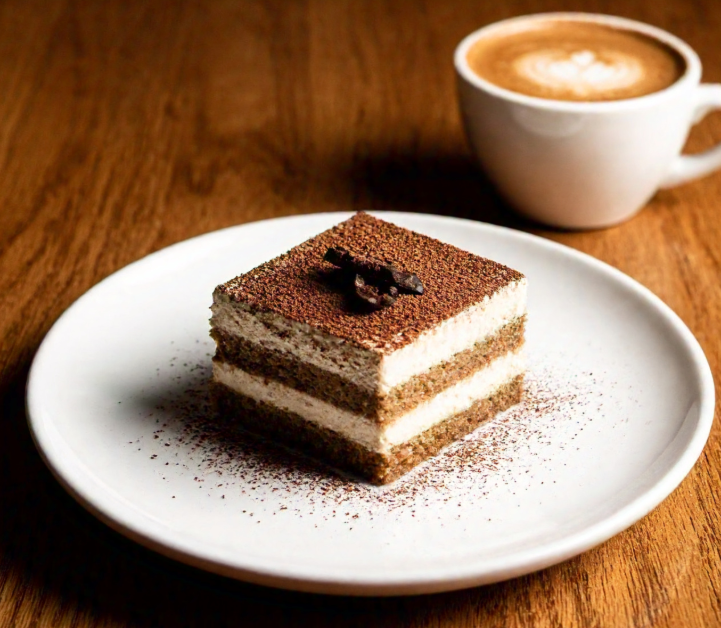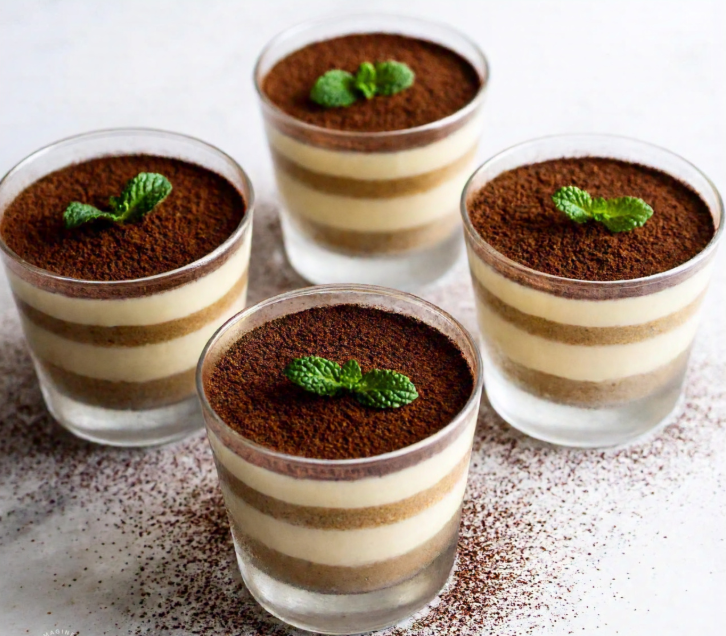Few desserts capture the hearts of foodies like tiramisu—a creamy, coffee-infused Italian treat. But what happens when gluten intolerance or dietary choices make you reconsider your favorite indulgence? Enter gluten free tiramisu, a modern spin on the classic that promises to deliver all the velvety richness without compromising health or flavor. Whether you’re following a gluten free lifestyle by necessity or by choice, this dessert will leave you wondering why you ever needed the traditional version.
Table of Contents
What Makes Tiramisu a Timeless Favorite?
The Origin and Evolution of Tiramisu
Tiramisu translates to “pick-me-up” in Italian, and for good reason. This dessert, traditionally made with layers of coffee-soaked ladyfingers, mascarpone cheese, and cocoa powder, has been a staple of Italian cuisine since the 1960s. Its flavors are bold yet harmonious—a delicate balance between the bitterness of espresso, the richness of mascarpone, and the light sweetness of sponge cake.
But as tiramisu became a global favorite, its recipes adapted to regional palates and dietary restrictions. Today, gluten free tiramisu isn’t just a necessity for those with celiac disease; it’s a delicious alternative for anyone seeking a lighter, more inclusive dessert experience.
Why Gluten Free Versions Are Trending Today
Let’s face it—gluten has gotten a bit of a bad rap lately. From celebrity endorsements of gluten free diets to growing awareness about celiac disease and gluten sensitivities, the demand for gluten free options is skyrocketing. But it’s not just about health concerns; gluten free baking challenges chefs to think creatively, resulting in recipes that are often as innovative as they are inclusive. Gluten free tiramisu is proof that you don’t have to sacrifice taste to meet dietary needs.
Understanding Gluten Free Baking
What Does “Gluten Free” Mean?
In simple terms, gluten free means eliminating gluten—a protein found in wheat, barley, and rye—from your food. For individuals with celiac disease or gluten sensitivity, consuming gluten can cause digestive distress, fatigue, and other health issues. However, going gluten free isn’t just about removing ingredients; it’s about finding suitable replacements that provide similar textures and flavors.
Choosing the right biscuit is crucial for desserts, especially gluten-free recipes. Discover the best biscuit options for cheesecake bases that can also work well for gluten-free tiramisu.
Benefits of a Gluten Free Diet
Aside from health reasons, gluten free diets offer several surprising benefits. Many people report feeling lighter, more energetic, and less bloated when they cut gluten from their meals. For desserts like tiramisu, going gluten free opens doors to experimenting with nutrient-rich flours like almond, coconut, and rice flour, which can add their unique charm to your creations.
Common Challenges in Gluten Free Baking
The biggest challenge in gluten free baking? Replicating the light, airy structure that gluten provides in traditional baked goods. Without it, cakes can become dense, crumbly, or dry. When it comes to tiramisu, getting the ladyfingers (or sponge cake) right is key. Thankfully, with the right combination of flours and techniques, it’s entirely possible to create a base that rivals its gluten-filled counterpart.
If you’re in search of other gluten-free, no-bake treats, these pumpkin cheesecake balls are an excellent addition to your dessert repertoire.
Key Ingredients in a Gluten Free Tiramisu
Choosing the Right Gluten Free Ladyfingers
The foundation of any tiramisu is its ladyfingers—light, sponge-like biscuits that soak up coffee and flavor without becoming mushy. For a gluten free tiramisu, you can opt for store-bought gluten free ladyfingers or make your own using a blend of almond flour and tapioca starch. Homemade versions often taste fresher and allow you to control the ingredients.
Dairy Products: Mascarpone and Cream
Mascarpone cheese is the soul of tiramisu. Its creamy, rich texture perfectly complements the coffee-soaked base. For a gluten free version, ensure that the mascarpone and cream you use are certified gluten free, as some dairy products may have additives containing gluten.
Safe Coffee Options for Gluten Free Desserts
Coffee is a no-brainer in tiramisu, but did you know that some flavored coffees or instant varieties may contain traces of gluten? Stick to pure espresso or certified gluten free brands.
Alternatives to Refined Sugar
If you’re looking to make your tiramisu even healthier, consider replacing refined sugar with natural sweeteners like coconut sugar, maple syrup, or monk fruit sweetener. These alternatives can add a unique depth of flavor while keeping the dessert guilt-free.
Step-by-Step Guide to Making Gluten Free Tiramisu
Creating a gluten free tiramisu may seem intimidating, but with the right ingredients and steps, it’s a piece of cake—or should we say, a layer of perfection? Let’s dive into a foolproof guide to crafting this indulgent dessert at home.
Preparing the Gluten Free Ladyfingers
The base of your tiramisu lies in the ladyfingers, and for a gluten free version, we need a little extra care to get them just right.
- Ingredients: To make your own gluten free ladyfingers, gather almond flour, tapioca starch, eggs, sugar (or your preferred natural sweetener), and a pinch of salt.
- Method: Start by separating the eggs into yolks and whites. Whip the whites until stiff peaks form, then gently fold in the yolks along with the almond flour and starch. Pipe this batter onto a baking sheet lined with parchment paper, shaping it into the classic ladyfinger size. Bake until golden and let them cool completely.
Store-bought gluten free ladyfingers are a convenient option too, but making them from scratch ensures freshness and a personal touch.
Making the Creamy Mascarpone Layer
The mascarpone cream is where the magic happens, and it’s surprisingly easy to whip up.
- Ingredients: You’ll need mascarpone cheese, heavy cream, egg yolks, sugar, and a dash of vanilla extract.
- Method: Begin by whisking the egg yolks and sugar until they’re pale and creamy. Gently fold in the mascarpone cheese until smooth. In a separate bowl, whip the heavy cream until it forms soft peaks, then combine it with the mascarpone mixture. The result should be silky, luscious, and ready to be layered.
For an egg-free alternative, you can substitute the yolks with extra whipped cream or use a vegan egg replacer.
Assembling the Perfect Layers

Now comes the fun part—assembling your tiramisu. Think of it as creating edible art.
- Prepare the Coffee Mixture: Brew a strong espresso and let it cool.
- Layer One – The Base: Dip each gluten free ladyfinger into the coffee mixture, being careful not to let them soak for too long. Arrange them in a single layer at the bottom of your dish.
- Layer Two – The Cream: Spread a generous layer of the mascarpone cream over the soaked ladyfingers. Smooth it out for an even texture.
- Repeat: Add another layer of coffee-dipped ladyfingers and top with more cream.
- Finishing Touches: Dust the final layer with unsweetened cocoa powder. For added flair, shave some dark chocolate on top or sprinkle a bit of cinnamon.
Tips for Achieving the Best Flavor and Texture
- Chill Overnight: Tiramisu tastes best when given time to rest. Refrigerate it for at least 6 hours or overnight to allow the flavors to meld beautifully.
- Balance the Sweetness: Adjust the sugar levels to your taste. A slightly less sweet mascarpone layer allows the coffee and cocoa flavors to shine.
- Avoid Over-Soaking: Over-soaked ladyfingers can turn your dessert into a soggy mess. A quick dip is all it takes.
Gluten Free Tiramisu Variations You’ll Love
One of the best parts about tiramisu is its versatility. Once you’ve mastered the gluten free classic, you can get creative with exciting variations.
Vegan Gluten Free Tiramisu
Want to make it dairy-free and egg-free? No problem! Swap the mascarpone and cream for coconut cream or cashew cream. Use flaxseed or aquafaba as an egg replacement in your ladyfingers. This version is equally indulgent and perfect for vegan friends or family.
Low-Sugar Gluten Free Tiramisu
For a lighter option, use monk fruit sweetener or erythritol instead of sugar. These alternatives maintain the sweetness without adding extra calories. Pair them with unsweetened cocoa powder for a guilt-free treat.
Kid-Friendly Tiramisu Without Coffee
If you’re making tiramisu for kids, replace the coffee with hot chocolate or a mild caramel syrup. This version is a hit at birthday parties and ensures the little ones can enjoy it too.
For a fun twist, you can experiment with creative variations of tiramisu, such as the delightful Oreo Tiramisu recipe, which offers a playful and modern take on the classic.
Troubleshooting Common Problems
Even the most seasoned bakers encounter hiccups, especially when working with gluten free recipes. Fear not—here’s how to tackle common issues when making gluten free tiramisu.
Why Does My Tiramisu Turn Out Soggy?
A soggy tiramisu usually means your ladyfingers absorbed too much liquid. Gluten free ladyfingers are often more delicate than their wheat-based counterparts, so a quick dip in the coffee mixture—no more than two seconds—is essential. Another tip? Allow the ladyfingers to cool fully before dipping. Warm biscuits are more likely to fall apart.
How to Achieve the Perfect Balance of Flavors
Striking the right balance in tiramisu is an art. Too much coffee can overpower the cream, while too much sugar can mask the rich depth of the espresso and mascarpone. Start with the recipe’s suggested measurements and adjust based on your preferences. Taste the mascarpone cream before layering to ensure the sweetness is just right.
Preventing Gluten Contamination
Cross-contamination is a critical concern when preparing gluten free desserts. Always use certified gluten free ingredients, clean surfaces thoroughly, and avoid using shared utensils or baking tools that may have traces of gluten. If you’re serving someone with celiac disease, even minor contamination can cause issues, so err on the side of caution.
Pairing Gluten Free Tiramisu with Beverages

A dessert as sophisticated as gluten free tiramisu deserves equally thoughtful beverage pairings. Whether you’re serving it at a dinner party or enjoying it as a personal indulgence, here are some options to complement its flavors.
Coffee Pairings: Best Brews for Tiramisu
Espresso is the natural companion for tiramisu, amplifying its coffee notes and cutting through the creaminess. If espresso feels too bold, try a medium roast coffee with chocolate undertones—it mirrors the dessert’s cocoa dusting beautifully.
The Health Benefits of Gluten Free Desserts
While tiramisu is undoubtedly a treat, a gluten free version offers some surprising perks.
Lowering Inflammation Through Gluten Free Choices
For those with gluten sensitivities, gluten free desserts can help reduce inflammation, leading to improved digestion and energy levels. Using whole-food flours like almond or coconut flour further enhances the health benefits by incorporating fiber and healthy fats.
Improving Digestive Health with Tiramisu Alternatives
By swapping traditional ladyfingers with gluten free ones, you’re avoiding common digestive irritants. Plus, using natural sweeteners and high-quality dairy can create a more nutrient-dense dessert that satisfies without weighing you down.
Tips for Serving and Storing Gluten Free Tiramisu
To keep your tiramisu as delicious as the moment it was made, follow these tips:
How to Store Tiramisu Without Compromising Texture
Refrigeration is essential for tiramisu, but exposure to air can dry out its creamy layers. Cover your dish tightly with plastic wrap or store individual portions in airtight containers. Gluten free tiramisu can be refrigerated for up to 3 days. Avoid freezing, as the mascarpone layer may separate upon thawing.
Serving Suggestions for Special Occasions
Gluten free tiramisu shines on its own, but a few finishing touches can elevate it for special events. Serve it in individual glass cups for an elegant presentation, or garnish with fresh berries, mint leaves, or edible gold dust for a festive look. Pair it with your carefully selected beverages to round out the experience.
Conclusion: Why Gluten Free Tiramisu is Worth Trying
There’s something magical about a dessert that’s both indulgent and inclusive. Gluten free tiramisu checks all the boxes: it’s rich, flavorful, and a testament to how dietary restrictions can inspire culinary creativity. Whether you’re accommodating gluten sensitivities or simply exploring new recipes, this dessert proves that great taste knows no bounds.
Give it a try—you might just discover your new favorite dessert!
For the holiday season, pair your tiramisu with festive creations like Christmas Tree Cakes to bring a seasonal charm to your dessert table.

